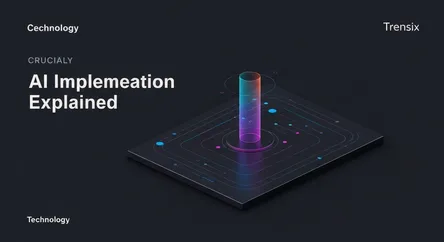Technology
AI Implementation Explained

Learn about AI implementation, the process of integrating artificial intelligence into business operations to drive efficiency and innovation.
What is it?
AI implementation is the process of integrating artificial intelligence technologies into existing business applications, systems, and workflows. It's the practical application phase that follows the development and training of an AI model. This involves deploying the technology into a live environment where it can begin performing its intended function, such as automating tasks, analyzing data, or improving customer interactions. Successful implementation requires careful planning, data integration, system compatibility checks, and ongoing management to ensure the AI solution delivers its expected value and operates reliably.
Why is it trending?
Businesses are increasingly moving from experimenting with AI to actively implementing it to gain a competitive edge. The trend is fueled by the proven return on investment, from automating repetitive tasks to unlocking complex data insights that drive strategic decisions. Advances in cloud computing have made powerful AI tools more accessible and affordable for companies of all sizes. As success stories about AI-driven efficiency, cost savings, and enhanced customer experiences become more common, organizations are feeling the pressure to adopt or risk falling behind their competitors.
How does it affect people?
AI implementation directly impacts people in both their professional and personal lives. In the workplace, it can automate mundane tasks, freeing up employees to focus on more creative and strategic work, but it also necessitates reskilling and can lead to job displacement in certain roles. For consumers, it powers personalized recommendations on streaming services, intelligent virtual assistants, and improved customer service through chatbots. This creates more convenient and tailored experiences, while also raising important considerations around data privacy, algorithmic bias, and the changing nature of human-computer interaction.